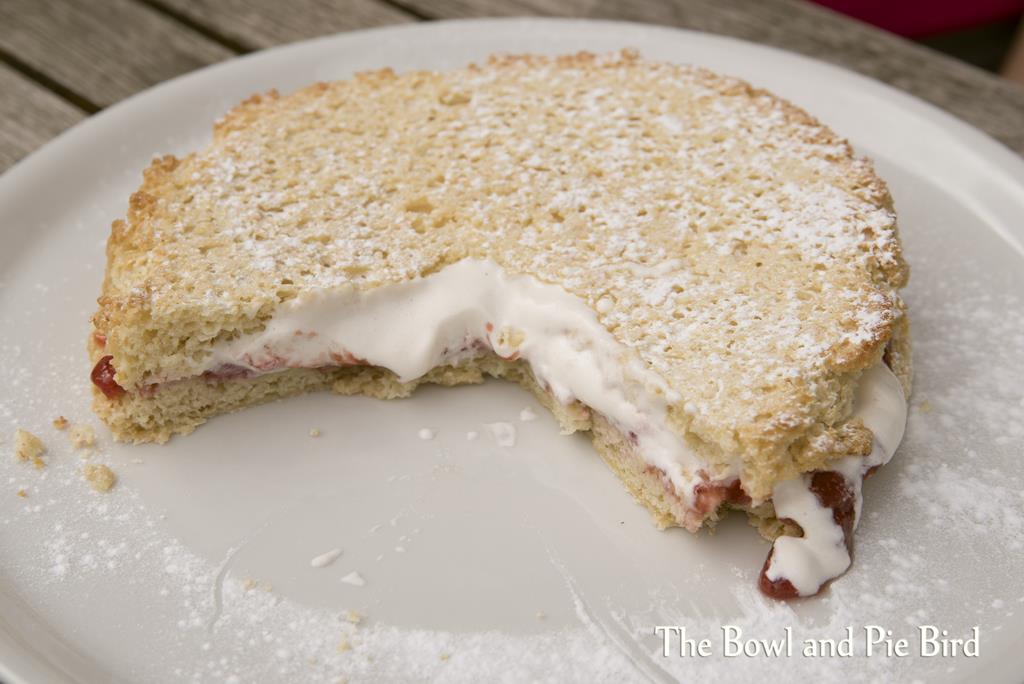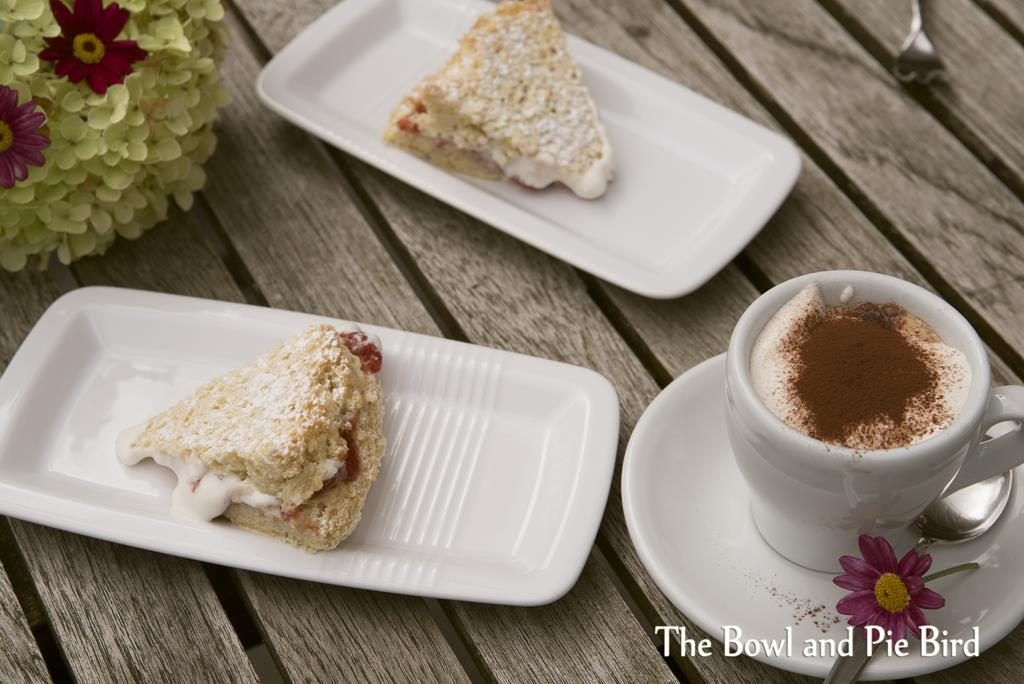
Ich habe letztes Jahr das erste Mal von veganem Eisschnee auf Sanjana’s Blog gelesen als ich ihre veganen Baisers gemacht habe. Unglaublich! Seit dem habe ich einige vegane Rezepte gebacken und mit dem Geschmack und dem Resultat sehr zufrieden. Vielleicht hat meine Mutter Recht, wenn sie sagt, dass der Sprung vom Vegetarier zum Veganer doch nicht so weit auseinander liegt. Ich weiß es nicht, da ich unglaublich gern Parmesan auf meinen Spaghetti esse. Aber zurück zu diesem leckeren Biskuit.
Aquafaba ist das Wort für die Flüssigkeit, die beim Kochen von Bohnen oder anderen Hülsenfrüchten wie Kichererbsen entsteht. Ich bekenne mich schuldig, dass ich bis letztes Jahr das Kichererbsenwasser immer weggeschüttet habe. Es sieht auch etwas merkwürdig aus. Faba ist lateinisch für Bohnen und Aqua, natürlich, für Wasser.
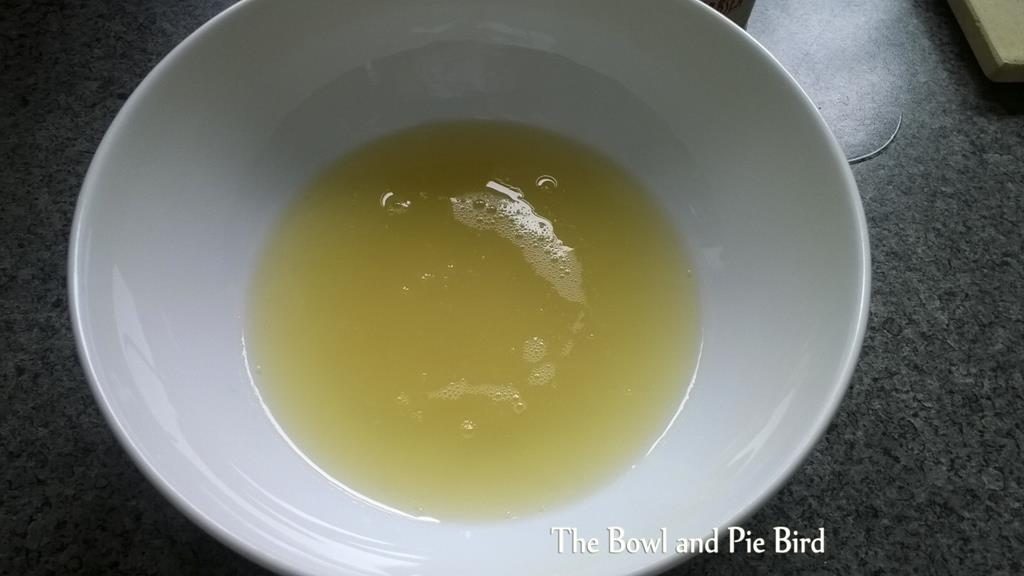
Der Name wurde von Goose Wohlt, einem (veganen) Softwareingenieur aus den USA, der mit veganem Ei-Ersatz experimentiert hat, geprägt. Er fand heraus, dass das Wasser von Kichererbsen allein ausreicht, um eine Eisschnee ähnliche Konsistenz zu kreieren. Er postete dies auf der beliebten Facebook Gruppe “What Fat Vegans Eat” und löste damit eine Lawine aus. Wenn das Thema Euch interessiert dann schaut auch auf der Facebook Gruppe “Vegan Meringue – Hits and Misses” vorbei und unter dem Menüpunkt “Community” auf dieser Website: http://aquafaba.com/index.html Es gibt es Infos zu weiteren Facebook Gruppen auf Französisch, Portugiesisch und Deutsch.
Und hier nun das Rezept, das ich ausprobiert habe. Es gibt einige Rezepte, aber dieses von Tivonika (YouTube Kanal) fiel mir auf also habe ich es ausprobiert.
- Ofen auf 180°C (Ober-/Unterhitze) vorheizen
- 200 g Mehr, 1 TL Backpulver und ¼ TL Natron in eine getrennte Schüssel sieben und zur Seite stellen
- 160 ml Aquafaba (ich habe Kichererbsen genommen) mit 1 TL Apfelessig aufschlagen. Wie bei Baiser aus Eiweiß wische ich meine Schüssel und den Aufsatz immer mit etwas Essig oder Zitronensaft ab, um möglich Fettreste zu entfernen, die sich negativ auf die Konsistenz auswirken können.
- Auf niedriger Stufe beginnen bis das Wasser etwas schäumt, dann langsam bis zur mittleren Stufe erhöhen. Wenn kein Wasser mehr zu sehen ist, dann auf höchste Stufe stellen und für ca. 10 Minuten aufschlagen bis die Masse fest ist.
- Während die Küchenmaschine noch läuft 160 g Zucker hineinrieseln lassen und ca. 2-3 Min. weiter aufschlagen
- 2 Esslöffel Sonnenblumenöl langsam einfließen lassen – langsam, da die Masse ansonsten gerinnen kann
- 1 TL Vanilleextrakt hinzufügen und einige Sekunden weiter aufschlagen
- Schüssel vom Mixer entfernen und das Mehlgemisch vorsichtig unterheben. Nicht zu viel mischen. Ihr wollt die eingeschlagene Luft behalten.
- In eine mit Backpapier ausgelegte 24er Springform füllen und ca. 30-35 Minuten backen
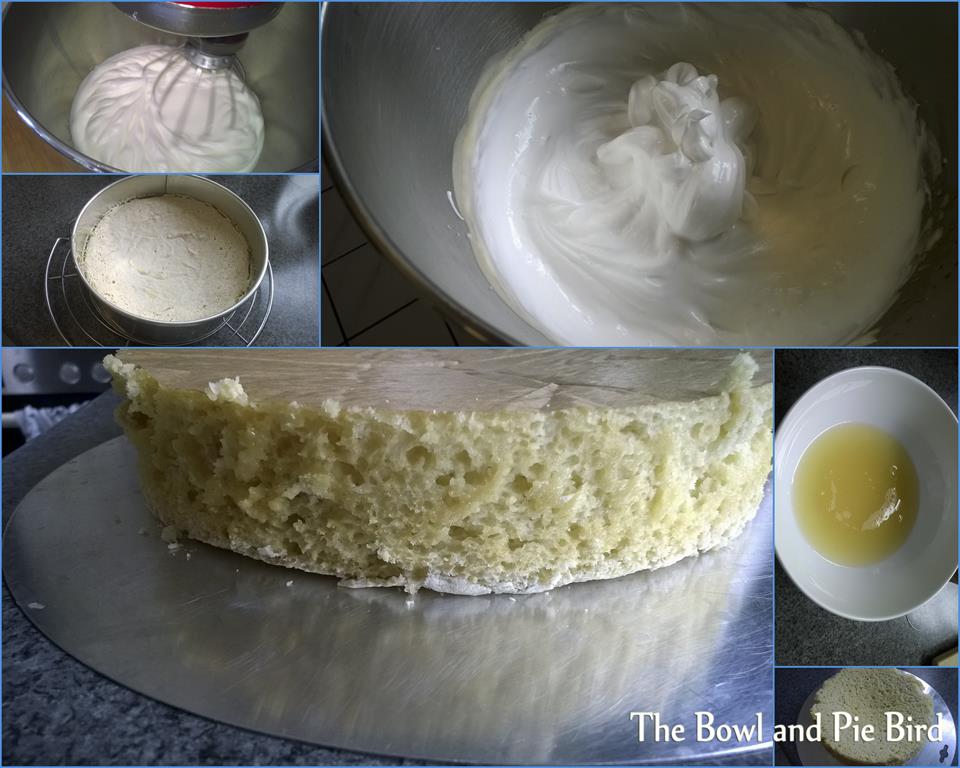
Ein traditioneller britischer “Victoria Sponge” ist ein einfacher Rührteig. Dieses Rezept ist eher ein Biskuit. Aber die Füllung vom Victoria Sponge – Konfitüre und Schlagsahne – passte hier perfekt. Ich habe meine selbstgemachte Erdbeermarmelade verwendet und eine vegane Schlagsahne ausprobiert (Natumi Bio CreSOY Soya-Sahne). Etwas enttäuschend ist, dass sie trotz SanApart nicht so steif wurde. Eher wie ein dicker Pudding. Sie schmeckte natürlich anders als Schlagsahne aber nicht unangenehm. Sehr nussig. Das einzig Ärgerliche ist der Preis. Mit €1,09 für 200 ml kostet diese Sojasahne doppelt soviel wie Schlagsahne aus Kuhmilch. Es scheint als wollten die Nahrungsmittelhersteller vom veganen Trend nur Profit schlagen. Da fragt man sich wirklich was Nahrungsmittel in Deutschland für einen Wert haben. €0,55 für ein tierisches Produkt kostet 50% weniger als die pflanzliche Alternative! Verrückt!
Der Kuchen schmeckte wirklich gut. Und ich singe nicht mein eigenes Lobeslied. Kein Geschmack von Kichererbsen. Versprochen. Sogar mein skeptischer Ehemann hat ein zweites Stück genommen. Ich werde weiter experimentieren, denn obwohl das Stäbchen nach der Backzeit sauber war, ist der Kuchen beim Abkühlen in der Mitte eingesunken. Ich habe auch eine 20 cm Form und nicht 24 cm wie im Rezept angegeben genommen. Vielleicht eignet sich der Teig nicht für kleine Formen, da er auch nicht so hoch backt. Aber bisher ist Aquafaba wirklich eine unglaubliche Alternative zu normalem Eiweiß.
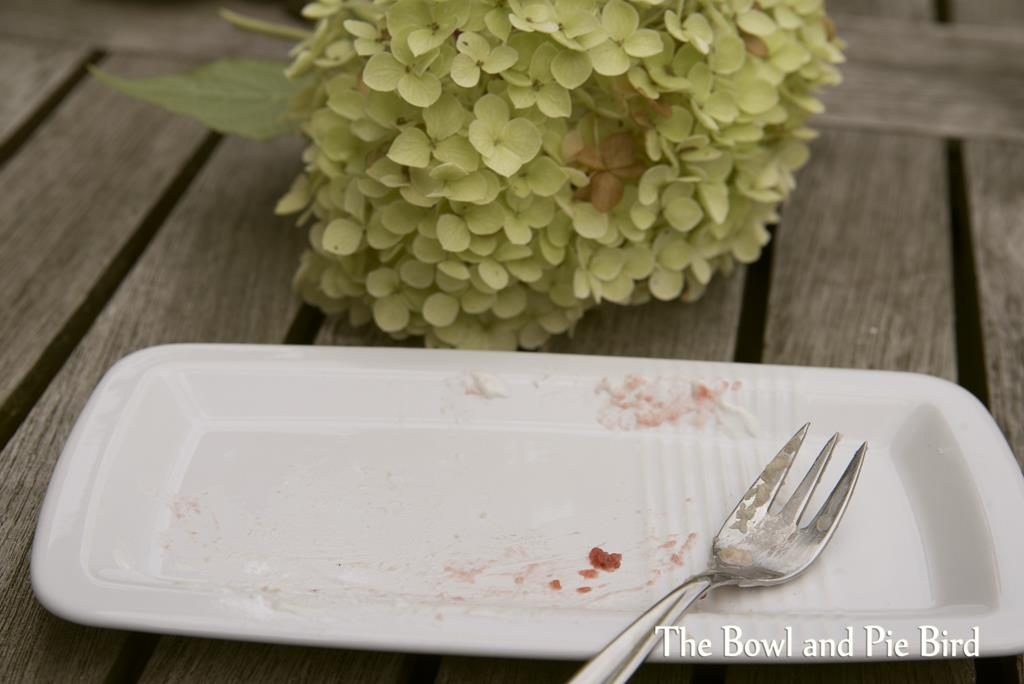
Macht einen leckeren Humus aus den Kichererbsen oder mischt sie einfach in einen Salat.
English

I first read about vegan meringue last year on Sanjana’s blog when I made her vegan meringues. Amazing stuff! Since then I have baked a few more vegan recipes and am really pleased with the taste and the outcome. My mum might be right when she said that the change from being a vegetarian to becoming a vegan might not take all that long. I don’t know about that as I do love parmesan cheese on my spaghetti. But back to this delicious vegan sponge recipe.
Aquafaba is the name for the cooking liquid of beans and other legumes like chickpeas. Up until last year I plead guilty to typically discarding the liquid of chickpeas. You will agree that this water does look a bit, erm, gooey. Faba is the Latin word for beans and Aqua, of course, water.

The name was coined by Goose Wohlt, a (vegan) software engineer in the US, who was experimenting with vegan egg replacements and found out that the chickpea water itself is enough to form a meringue-like consistency. He posted this on the popular Facebook group “What Fat Vegans Eat” and set off a landslide. If you are interested then check out the other Facebook group “Vegan Meringue – Hits and Misses” and the tag “Community” on this site http://aquafaba.com/index.html. There are Facebook groups listed there in French, Portuguese and German.
And here comes the recipe I tried out. There are quite a few about, but this one from Tivonika (YouTube channel) caught my eye and so I gave it a go.
- Preheat your oven to 180°C (not fan-forced)
- Sift together 200 g flour, 1 tsp baking powder and ¼ tsp baking soda into a separate bowl and set aside.
- Whip 150-160 ml of aquafaba (I used chick pea, 400 g can) with 1 tsp apple vinegar. Like when making meringues with egg whites I always wipe my bowl and whisk attachment with some vinegar or lemon juice to get rid of any oils which can compromise the stability of the meringue.
- Start on low speed until most of the aquafaba has turned foamy and then gradually increase the speed to medium. When there is no more liquid left, increase the speed to maximum and whip until firm. This will take about 10 minutes.
- Gradually, while the mixer is still running on high speed, add 160 g sugar. Whip until all of the sugar has dissolved. About 2-3 min.
- While the mixer still running on high speed, add 2 tbsp oil (I used sunflower). Add the oil very slowly, or it will separate from the meringue.
- Add 1 tsp vanilla extract and whip a few more seconds.
- Release bowl from machine and gently fold the flour into the meringue. Don’t over mix it. You want to keep all the air you beat into the mixture.
- Pour into lined (base) 24 cm round baking tin. Bake for approx. 30-35 min.

The traditional British Victoria sponge is filled with jam and whipped cream. So I spread on some of my home made strawberry jam and tried out some vegan whipping cream (Natumi Bio CreSOY Soya-Sahne, German brand). I was a bit disappointed in that the cream didn’t whip up extremely thick even with a thickening agent. It was more like a very thick pudding. The taste was different to dairy cream of course, but not unpleasant. Sort of nutty. The only annoying thing is the price. At €1,09 for 200 ml it is double the price of dairy whipping cream. It seems as if the industry want to make a huge profit from veganism. Makes you stop and think about what food really is worth here in Germany. €0,55 for a food which comes from an animal costs 50% less than the plant based alternative! Crazy!
The cake tasted really good. And I am not just blowing my own trumpet. No taste of chickpeas. Promise. Even sceptical hubby took a second helping. I will be doing a bit more experimenting as although the skewer cake out clean you can see from the photo that the cake sunk in the middle after I took it out of the oven. I baked it in a 20 cm cake pan and not 24 cm like in the recipe. Maybe this recipe isn’t suitable for smaller pans as it doesn’t rise very much. But having said that so far aquafaba is an egg-cellent replacement for egg whites. Excuse the pun, but this topic does lend itself to this play on words! 😉

Use the chickpeas for making delicious hummus or just toss them into a salad.



